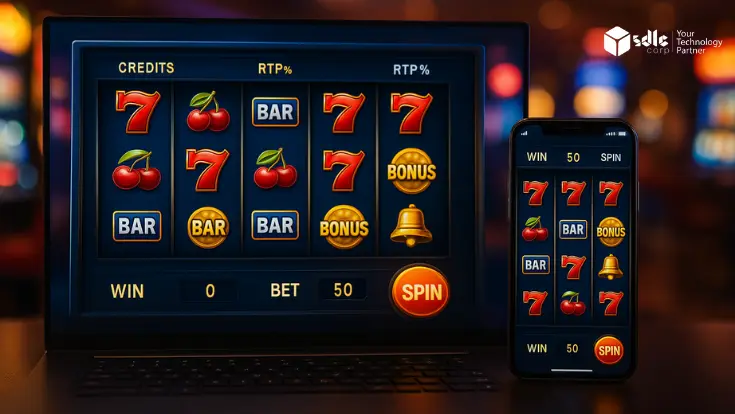The fusion of gaming and decentralized finance (DeFi), known as GameFi, is transforming the gaming industry by allowing players to earn real-world value through blockchain-powered play-to-earn (P2E) models, NFTs, and metaverse integration. With billions of dollars flowing into Web3 gaming, GameFi is no longer just a trend—it’s the future of gaming.
As we step into 2024 and beyond, GameFi ecosystems are evolving rapidly, integrating new technologies like AI, virtual reality, and cross-chain interoperability. But what key trends should we watch? How will GameFi shape the future of gaming and digital economies?
In this blog, we’ll explore the most exciting GameFi trends, the challenges ahead, and what they mean for gamers, developers, and investors.
1️⃣ The Rise of AAA-Quality Blockchain Games
🔹 The Shift from Basic P2E Games to High-Quality Gameplay
- Early GameFi projects focused heavily on financial rewards rather than immersive gameplay.
- Players demanded better graphics, engaging storylines, and high-quality mechanics.
- AAA blockchain games are emerging with Unreal Engine 5, advanced AI, and multiplayer features.
🔹 Examples of Upcoming AAA GameFi Titles
- Illuvium – An open-world RPG integrating NFTs and DeFi.
- Star Atlas – A space exploration game with next-gen graphics and play-to-earn economics.
- Shrapnel – A AAA-quality first-person shooter (FPS) built on blockchain.
🚀 Key Takeaway: GameFi is moving beyond simple P2E mechanics, integrating AAA gaming experiences that rival traditional gaming giants.
2️⃣ Evolution of Play-to-Earn (P2E) into Play-and-Earn (P&E)
🔹 The End of Unsustainable P2E Models
- Early P2E games like Axie Infinity relied on inflationary reward systems, leading to market crashes.
- Developers are shifting to “Play-and-Earn” (P&E) models, focusing on game enjoyment first, rewards second.
🔹 Play-and-Earn Strategies in GameFi
✔ Balanced tokenomics to avoid reward inflation.
✔ Hybrid revenue models (NFT trading, premium content, ads).
✔ Sustainable in-game economies with staking, governance, and DAO participation.
🔥 Why It Matters: Games must be fun and engaging first—earning crypto is just a bonus.
3️⃣ Cross-Chain Interoperability & Multi-Chain GameFi
🔹 The Problem: GameFi’s Blockchain Fragmentation
- Many blockchain games are limited to one network (Ethereum, BSC, Solana).
- Players struggle to transfer assets across ecosystems.
🔹 The Solution: Multi-Chain GameFi
- Cross-chain NFT assets allow players to use skins, weapons, and in-game tokens across multiple platforms.
- Bridges and Layer-2 solutions (like Polygon, Avalanche) enhance scalability and lower gas fees.
🛠️ Key Innovations:
✔ Immutable X & Polygon – Enable gas-free NFT transactions.
✔ WAX & Enjin – Game-centric blockchains for interoperability.
🌍 The Future: Players will own assets across multiple games, just like carrying their favorite items between different RPGs.
4️⃣ Metaverse Integration & Virtual Ownership
🔹 The Expansion of GameFi Metaverses
- GameFi is no longer just about earning crypto—it’s about virtual land ownership, social experiences, and persistent worlds.
- Players can buy, sell, and trade virtual real estate, NFT avatars, and digital assets inside these metaverses.
🔹 Examples of GameFi Metaverse Growth
- The Sandbox & Decentraland – Users own NFT land plots and monetize virtual businesses.
- Otherside (by Yuga Labs) – Expanding the metaverse with interactive, NFT-driven environments.
🚀 Big Picture: GameFi metaverses will redefine digital economies, where gamers become virtual entrepreneurs.
5️⃣ AI & GameFi: Smarter NPCs & Personalized Gameplay
🔹 AI-Driven NPCs & Game Environments
- AI-powered NPCs (Non-Playable Characters) will offer realistic interactions in blockchain-based worlds.
- AI-generated quests and adaptive gameplay will make GameFi more immersive and engaging.
🔹 AI for Asset Creation & Automation
✔ AI-generated NFTs (Unique skins, weapons, and collectibles).
✔ AI-driven smart contracts that manage game economies automatically.
✔ AI-based fraud detection to prevent exploits in DeFi gaming models.
🤖 Why It Matters: AI will make GameFi games more intelligent, interactive, and immersive.
6️⃣ GameFi & Real-World Utility: Moving Beyond Gaming
🔹 Real-World Business Models in GameFi
- NFT-based characters and assets could be rented out in virtual economies.
- Brands will enter GameFi for marketing, product placement, and sponsorships.
🔹 NFT Gaming Guilds & Scholarships
- Groups like Yield Guild Games (YGG) offer scholarships to players who can’t afford high-cost GameFi assets.
- Earning from gaming is becoming a full-time profession in some countries.
💡 Key Takeaway: GameFi isn’t just about playing—it’s a new digital economy where gamers can earn real incomes.
7️⃣ Regulatory & Security Challenges in GameFi
🔹 Potential Government Regulations
- GameFi projects must comply with financial laws (AML, KYC).
- Some governments might restrict tokenized earnings due to gambling concerns.
🔹 Cybersecurity & Fraud Risks
- Smart contract vulnerabilities can lead to hacks and exploits.
- Fake GameFi projects & rug pulls remain a threat.
🔐 What’s Next? Expect better regulation, improved security audits, and more trust in legitimate GameFi platforms.
Conclusion
The GameFi revolution is transforming gaming by integrating blockchain technology, NFTs, and decentralized economies, creating new opportunities for players, developers, and investors. As the industry moves toward AAA-quality blockchain games, AI-driven experiences, and cross-chain interoperability, the focus is shifting from Play-to-Earn (P2E) to Play-and-Earn (P&E), ensuring long-term sustainability and mainstream adoption.
For businesses looking to capitalize on this next-generation gaming landscape, investing in Blockchain Game Development is crucial to building immersive, scalable, and economically viable gaming ecosystems.



